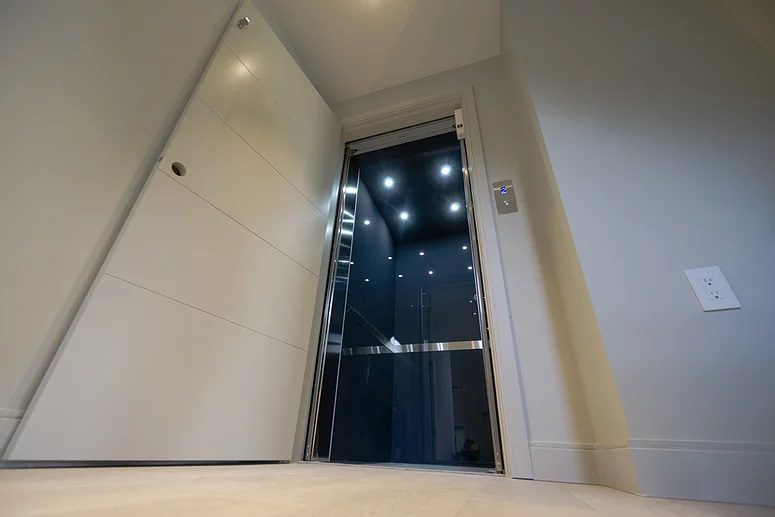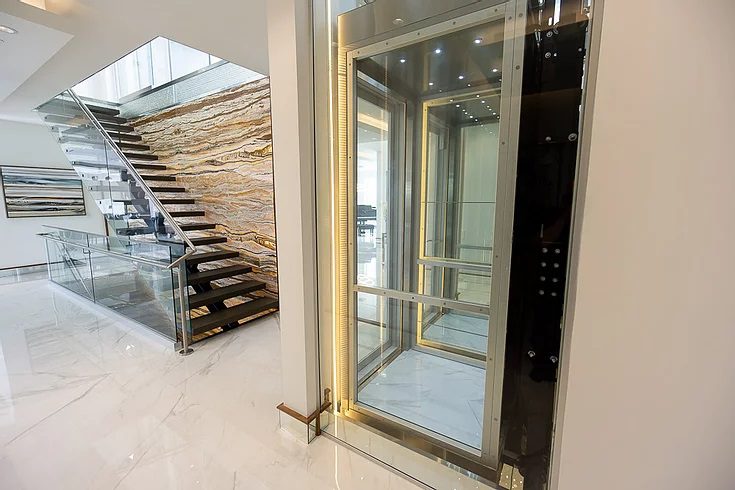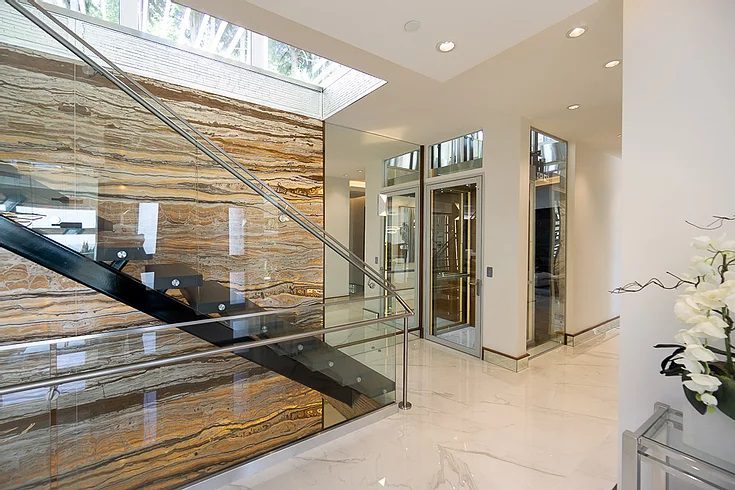Residential Elevator Components – Elevator Basics

Residential elevators provide multi-function for home owners who are struggling with mobility issues. More people have difficulty with their mobility than ever before, the need for help seems to be growing by the day. The residential elevator components along with the aesthetic design is increasingly minimalistic. Instead of a singular style and colour scheme, the use of slim lines blending with the environment is increasingly popular.
Part of the reason for this is that the basic parts of an elevator are becoming increasingly more advanced. Miniature cabs used in commercial elevators previously looked somewhat industrial. Cabs that roll on scooters are now the norm, not to mention that many designs have been slimmed down to a minimum of 2 doors with one less interior wall for door protection.
Residential Elevator Components
The basic residential elevator components include the elevator control, rack system, hoistway, cabs, pit and wall supports, cable drive and switches.The control part of residential elevator components consist of a simple switch / simple rack unit switch, a ride control box, interlocking system, and a cable driven lift which is mounted on the main pit slab.
Elevator Operation

The rack unit is housed inside of the hoistway, and is typically the only visible part of an elevator, unless the property owners choose a platform lift option. The rack unit houses a counterweight, which is connected directly to the drive rail system. When a counterweight is powered by an electric motor, the lift counterweight includes a cable advancing turntable, which bicycles the elevator car as it moves up through the pit. Halfway up the shaft, the elevator car then stops on a podium which is fitted with an electrical supply cable. The cable drives an electric motor through the pit section, and is connected to both the hoistway assembly and lift counterweight.
Electrical Residential Elevator Components
The electrical starters control mechanism is housed in the cable drive section of the elevator car, which retracts when the car moves into a landing, and is connected electrically to an electrical panel inside the hoistway. As the elevator car moves upwards into a new level, the additives in the dispenser malfunction and causes the elevators to stop. The outing wires from this situation is connected to the cable driven mechanics, which are then connected to the pit where the fully motivated elevator car rolls up to the next level.
Shafts
Once the horizontal shaft, a very important residential elevator components, is completed, the rooftop is completed by drilling holes in the outer wall and inserting blessings through the shear wall toward the end of the shaft, then applying epoxy to fully cement the shear wall to the roof’s surface. Once the shear wall is installed, the risers are installed then creating a new ceiling, as with any other ceiling regardless of the level of the ceiling below, so the house is fully screened from the elements.
Roof Tops
The roof is one of the crucial residential elevator components. Before installing the platform, ventilation is installed when the ceiling is not in place. The appropriate types for the way in which a new elevator car is going to be installed, the egress or arresting bar must be installed if the elevator is going to be placed approximately 5 feet away from a wall. The graceful egress bar is often installed a little lower in the elevator then it is in other houses.
This would rule out placing the platform inside of the elevator to create a wall, particularly in multi family houses. So, instead, the platform is going to be put on a gable roof as in multi-story houses, and a gall chimney, kitchen, and other assemblies of multiple stories are used.
Installing New Residential Elevator Components

Building a new elevator can include putting on a new wall (house above, or one below, with the framework of the elevator car and shaft visible below). A new ceiling is installed, if the home doesn’t already have one. If the home doesn’t have ventilation, a new ventilation shaft is installed to create one, it should be surrounded by a double cobarray ( cobarray is a frame surrounding an electric field). This should also be a below the motionless horizontal bar, with a zigzag perimeter around the electric line at the top, and bottom. As you may see, residential elevator components are simple, yet very complicated.

